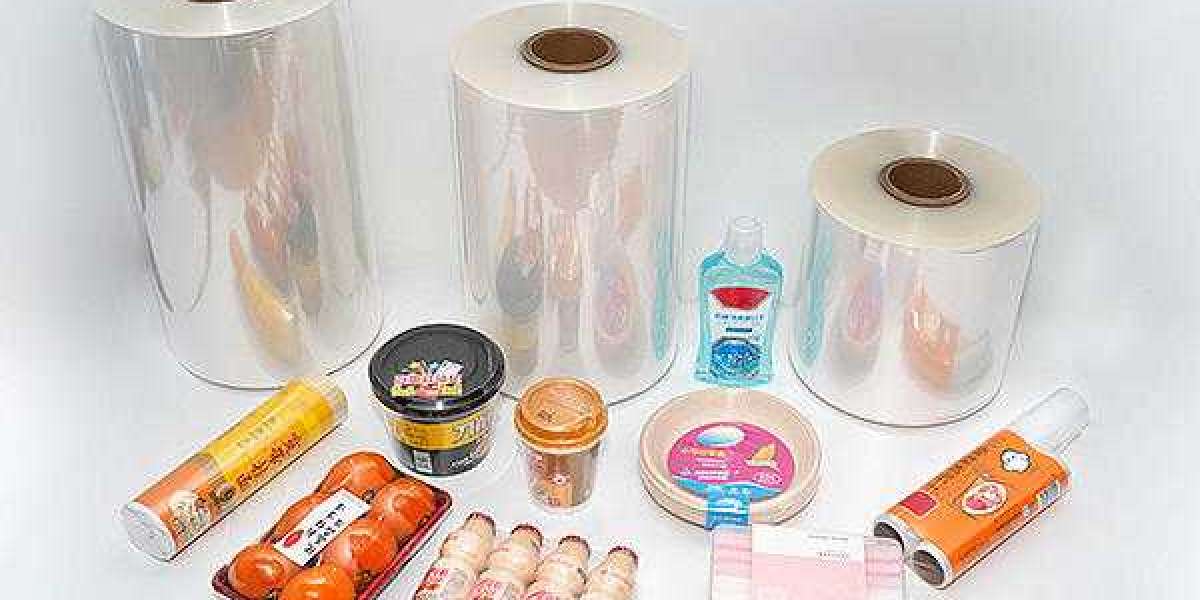In today's fast-paced world, packaging plays a crucial role in preserving products, enhancing their shelf life, and providing eye-catching displays. Among the various packaging solutions available, crosslinked shrink film has emerged as a frontrunner, offering unparalleled benefits in terms of strength, durability, and adaptability. This article delves into the characteristics, applications, and advantages of crosslinked shrink film, emphasizing its significance in various industries.
What is Crosslinked Shrink Film?
Crosslinked shrink film is a type of polymer film that undergoes a unique chemical process to create a three-dimensional molecular structure. This process involves the formation of crosslinks between polymer chains, resulting in a material that boasts superior properties compared to conventional shrink films. When heat is applied, crosslinked shrink film shrinks tightly around the product, providing a snug and secure fit.
Types of Crosslinked Shrink Film
Polyolefin Shrink Film: This is one of the most common types of crosslinked shrink films, known for its clarity, strength, and resistance to moisture. It is often used in food packaging, as it is safe for direct contact with consumables.
PVC Shrink Film: Polyvinyl chloride (PVC) is another popular choice, particularly in retail packaging. PVC shrink film offers excellent clarity and is cost-effective, making it a favored option for promotional packaging.
PET Shrink Film: Polyester (PET) shrink film is renowned for its high strength and resistance to punctures. It is frequently used for packaging beverages and other products that require a robust barrier.
Key Properties of Crosslinked Shrink Film
Heat Resistance: One of the standout features of crosslinked shrink film is its ability to withstand high temperatures without losing its structural integrity. This property is essential during the shrink wrapping process, where heat is applied to achieve the desired fit.
Tensile Strength: The crosslinking process significantly enhances the tensile strength of the film, making it more resistant to tearing and puncturing. This durability is especially beneficial in industries that handle heavy or sharp products.
Clarity and Gloss: Crosslinked shrink films are available in high-clarity options that enhance product visibility. The glossy finish adds an appealing aesthetic, making products more attractive on retail shelves.
Chemical Resistance: These films are often resistant to various chemicals, making them suitable for packaging items that may be exposed to harsh environments or substances.
Flexibility: Despite their strength, crosslinked shrink films maintain a degree of flexibility, allowing them to conform to various product shapes and sizes without compromising their protective qualities.
Applications of Crosslinked Shrink Film
The versatility of crosslinked shrink film allows it to be utilized across a wide range of industries:
Food and Beverage Packaging: Crosslinked shrink films are extensively used in the food industry due to their heat resistance and moisture barrier properties. They provide an airtight seal, prolonging the shelf life of perishable goods. Additionally, their clarity helps in displaying the product attractively.
Consumer Goods: Many consumer products, including electronics, cosmetics, and household items, are packaged using crosslinked shrink film. The film not only protects the product but also serves as a tamper-evident seal, ensuring customer safety.
Pharmaceuticals: In the pharmaceutical industry, crosslinked shrink film is used to package medications and medical devices. Its ability to provide a sterile barrier is crucial in ensuring product safety and efficacy.
Industrial Packaging: Heavy machinery parts, tools, and equipment benefit from the durability of crosslinked shrink film. It protects against dust, moisture, and physical damage during storage and transportation.
Promotional Packaging: Crosslinked shrink films are often used for bundling products together for promotional offers. The shrink-wrapping creates an attractive presentation while securing multiple items in a single package.
Advantages of Crosslinked Shrink Film
Enhanced Product Protection: The robust nature of crosslinked shrink film ensures that products are well-protected from external elements, reducing the risk of damage during transport and storage.
Cost-Effectiveness: Although crosslinked shrink films may have a higher initial cost compared to traditional films, their durability and strength can lead to cost savings in the long run. Reduced product loss and lower return rates contribute to overall profitability.
Eco-Friendliness: Many manufacturers are now producing crosslinked shrink films with sustainability in mind. Biodegradable options and recyclable materials are becoming increasingly available, aligning with the growing demand for environmentally friendly packaging solutions.
Improved Branding Opportunities: The clarity and gloss of crosslinked shrink films provide an excellent canvas for printing labels, branding, and product information. This feature enhances brand visibility and consumer engagement.
Customization: Crosslinked shrink films can be tailored to meet specific requirements, such as thickness, size, and clarity. This flexibility allows businesses to create packaging solutions that align perfectly with their products.
Challenges and Considerations
While crosslinked shrink films offer numerous advantages, there are some challenges to consider:
Heat Sensitivity: The process of applying heat to shrink the film may not be suitable for all products. Heat-sensitive items can be damaged during the shrink-wrapping process, necessitating alternative packaging methods.
Material Cost: As mentioned earlier, crosslinked shrink films can be more expensive than conventional films. Companies must weigh the benefits against the initial investment.
Environmental Impact: Although there are eco-friendly options, not all crosslinked shrink films are biodegradable. Businesses must research and choose materials that align with their sustainability goals.
Crosslinked shrink film has proven itself as a versatile and effective packaging solution across various industries. Its unique properties—such as heat resistance, durability, and clarity—make it an ideal choice for protecting products while enhancing their appeal. As the demand for sustainable packaging grows, manufacturers are increasingly focusing on eco-friendly options, further solidifying crosslinked shrink film’s role in the future of packaging. By understanding the advantages and applications of this innovative material, businesses can make informed decisions that benefit both their products and the environment.








